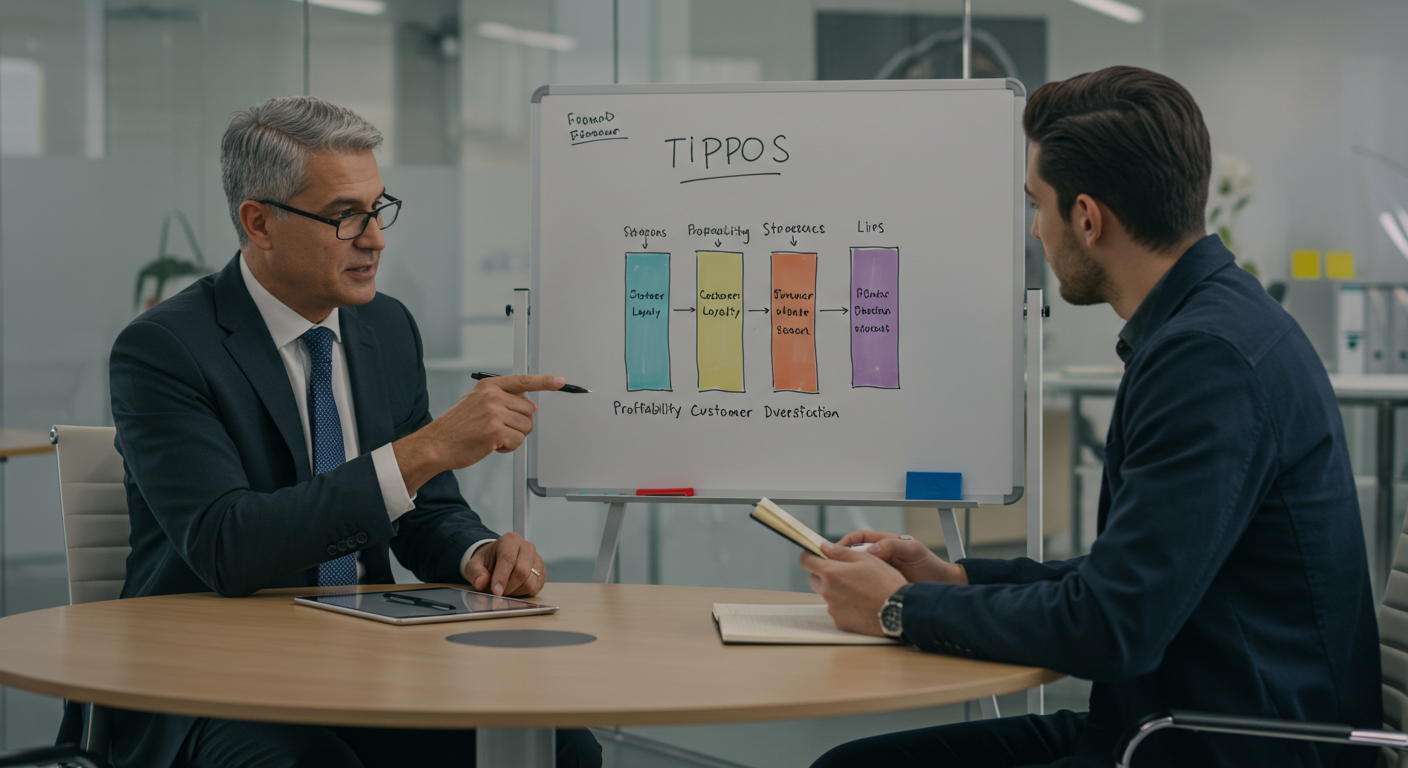No mundo acelerado das startups, o foco é frequentemente no crescimento rápido e nas vendas imediatas. No entanto, o verdadeiro sucesso reside em construir um negócio sustentável – um que seja resiliente, lucrativo a longo prazo e capaz de resistir às flutuações do mercado.
Um negócio sustentável vai além de ser ecologicamente correto; é um modelo construído sobre fundamentos financeiros sólidos, um compromisso com a lucratividade de longo prazo e uma profunda conexão com seus clientes e colaboradores. Este guia fornece dicas acionáveis para criar um negócio feito para durar.
1. Foco na Lucratividade, Não Apenas na Receita (O Fundo Monetário)
Um negócio com alta receita, mas baixo lucro, não é sustentável. É um erro comum focar apenas na linha de cima (receita) e negligenciar a linha de baixo (lucro).
- Mantenha uma Margem de Lucro Saudável e Mantenha a Disciplina: Um negócio sustentável deve ser lucrativo em todas as transações. Seja meticuloso ao rastrear todos os seus custos (produção, marketing, impostos e seu próprio salário). Defina um preço que permita uma margem de lucro saudável e não tenha medo de cobrar o seu valor. A sustentabilidade começa com o dinheiro que fica no caixa, e não com o que apenas passa por ele.
- Controle Seus Custos Fixos (Overhead) ao Máximo: Mantenha seus custos fixos (aluguel, assinaturas de software, salários) os mais baixos possíveis, especialmente nos estágios iniciais. Isso proporciona uma rede de segurança durante períodos lentos e garante que uma porção maior da sua receita seja convertida em lucro.
- Crie uma Reserva de Emergência (Cash Buffer): Um negócio sustentável nunca vive no limite. Mantenha um cash buffer equivalente a 3 a 6 meses de despesas operacionais. Essa reserva permite que você enfrente crises econômicas ou problemas de fluxo de caixa inesperados sem ter que recorrer a empréstimos de alto custo ou fechar as portas.
2. Construa Lealdade e uma Marca Fundamentada em Valores
A lealdade do cliente é a pedra angular da sustentabilidade. Reter um cliente existente é muito mais econômico do que adquirir um novo.
- Marca como Conexão Emocional: Sua marca é a sua promessa. Seja claro sobre seus valores fundamentais, sua missão e sua proposta de venda única (USP). Essa clareza atrai clientes que estão alinhados com sua visão, o que leva a uma lealdade mais profunda e uma menor sensibilidade ao preço.
- Excelência no Serviço como Diferencial: Um serviço ao cliente excepcional é a ferramenta mais poderosa para construir lealdade. Responda prontamente, resolva problemas de forma ágil e faça um esforço extra para fazer o cliente se sentir valorizado. Um cliente feliz é um cliente recorrente e um poderoso advogado da marca (word-of-mouth).
- Transforme Funcionários em Defensores: A sustentabilidade também é interna. Invista na sua equipe e em sua cultura. Funcionários engajados e satisfeitos entregam um serviço de melhor qualidade, o que, por sua vez, aumenta a lealdade do cliente.
3. Diversifique e Mitigue Riscos (Não Coloque Todos os Ovos na Mesma Cesta)
Depender de um único produto, serviço ou canal de vendas é arriscado. Se esse pilar falhar, todo o negócio pode entrar em colapso.
- Identifique Fluxos de Renda Complementares: Procure maneiras de oferecer produtos ou serviços que criem fontes de receita adicionais.
- Exemplo: Um freelancer pode criar um curso online (produto digital) ou um negócio de produtos pode oferecer um plano de manutenção ou uma assinatura mensal (receita recorrente).
- Diversifique Seus Canais de Vendas: Não dependa apenas de um canal (ex: Instagram). Desenvolva uma presença em múltiplos canais: seu próprio website (e-commerce), mídias sociais e, se aplicável, mercados físicos. Isso divide o risco se uma plataforma mudar seus algoritmos ou políticas.
- Gerencie o Risco de Fornecedores: Se você depende de um único fornecedor, busque ativamente um segundo e um terceiro. A dependência de um único ponto de falha logístico pode paralisar sua produção em caso de crise.
4. Adote uma Mentalidade de Longo Prazo e Inovação Contínua
Negócios sustentáveis não são construídos da noite para o dia. Eles são o resultado de ações estratégicas e consistentes ao longo do tempo.
- Planeje a Visão (3 a 5 Anos): Embora as metas de curto prazo sejam cruciais, mantenha sua visão de longo prazo em mente. Crie um plano estratégico que esboce onde você quer que seu negócio esteja em 3 a 5 anos. Este plano deve guiar suas grandes decisões, evitando gastos impulsivos.
- Inovação Contínua e Adaptação: O mundo dos negócios está sempre mudando. Para se manter sustentável, você deve estar disposto a inovar e adaptar-se. Crie processos para ouvir o mercado (clientes e tendências tecnológicas) e esteja pronto para pivotar seu modelo de negócio ou oferta quando necessário. A rigidez é o inimigo da sustentabilidade.
Considerações Finais: Construindo um Legado, Não Apenas uma Venda
Construir um negócio sustentável é uma maratona, não um sprint. Requer paciência, disciplina e um profundo compromisso com a lucratividade de longo prazo e o valor para o cliente. Ao focar em sua linha de lucro, construir uma base de clientes leal e planejar o futuro com mitigação de riscos, você não está apenas construindo um negócio; você está construindo um legado que pode resistir ao teste do tempo.
Qual destas áreas (Lucratividade, Lealdade ou Diversificação) é o foco mais urgente para o crescimento sustentável do seu negócio hoje?
